Back To The 17th Century
At the end of March, I visited an exhibition that was featuring life in the 17th century in one of the cities of Transylvania. It's always nice to go back in time and see how those people lived and how different life was back then. You can check out my previous posts about the exhibition here, here and here.
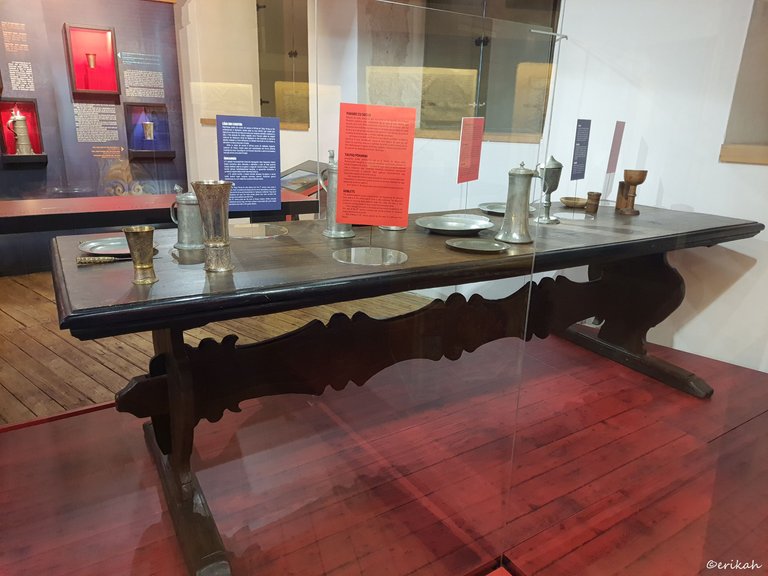
This was a nice, carved wooden table, very specific to those times, but only nobles could afford to have such beautiful furniture. The poor had roughly chopped wooden furniture, something they could make manually on their own.
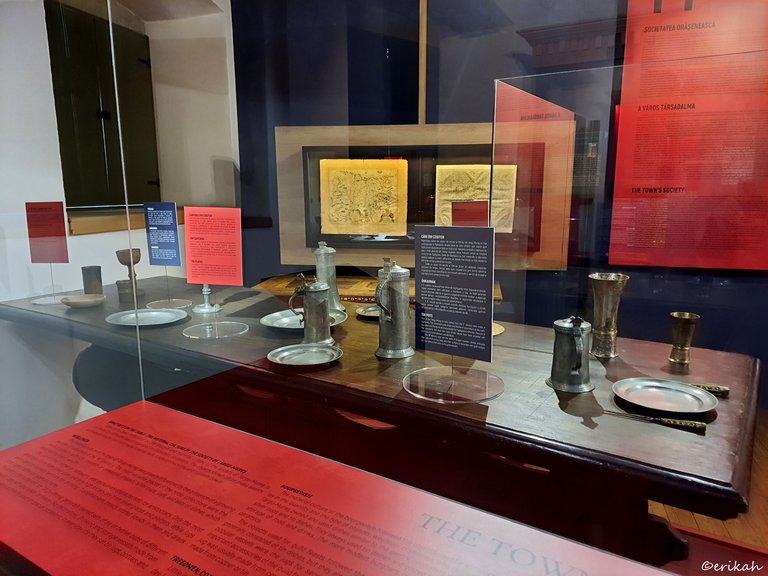
Most likely you have already seen similar items in movies, but these are authentic from the 17th century. Mostly nobles had such tableware, as again, the poor had wooden cups and plates, or mace of ceramics or earth ware. These cups and plates were handmade and decorated nicely. The wealthier the client, the more decorated and valuable the cups and plates were.

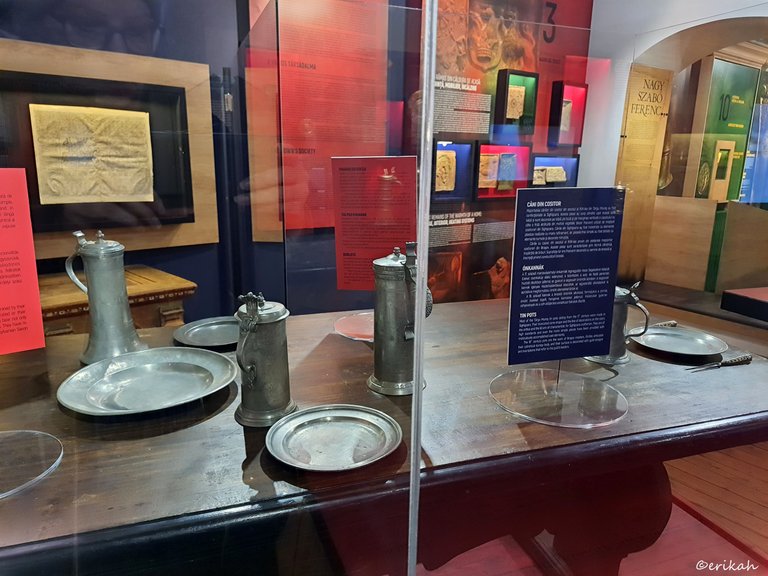
These were pretty simple though.
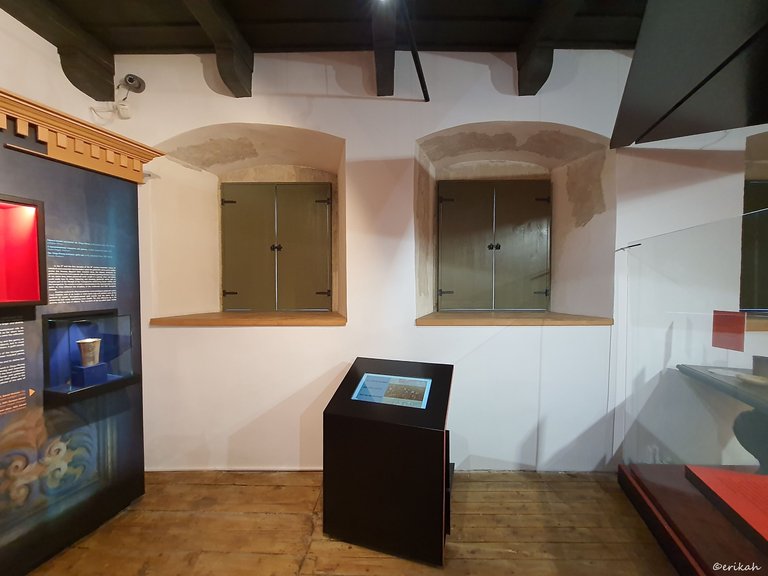
The building of the museum dates back to the 17th century, at least a part of it. later it was updated and the actual form you see today was built in the 19th century. I took this photo for you to see how thick the walls are.
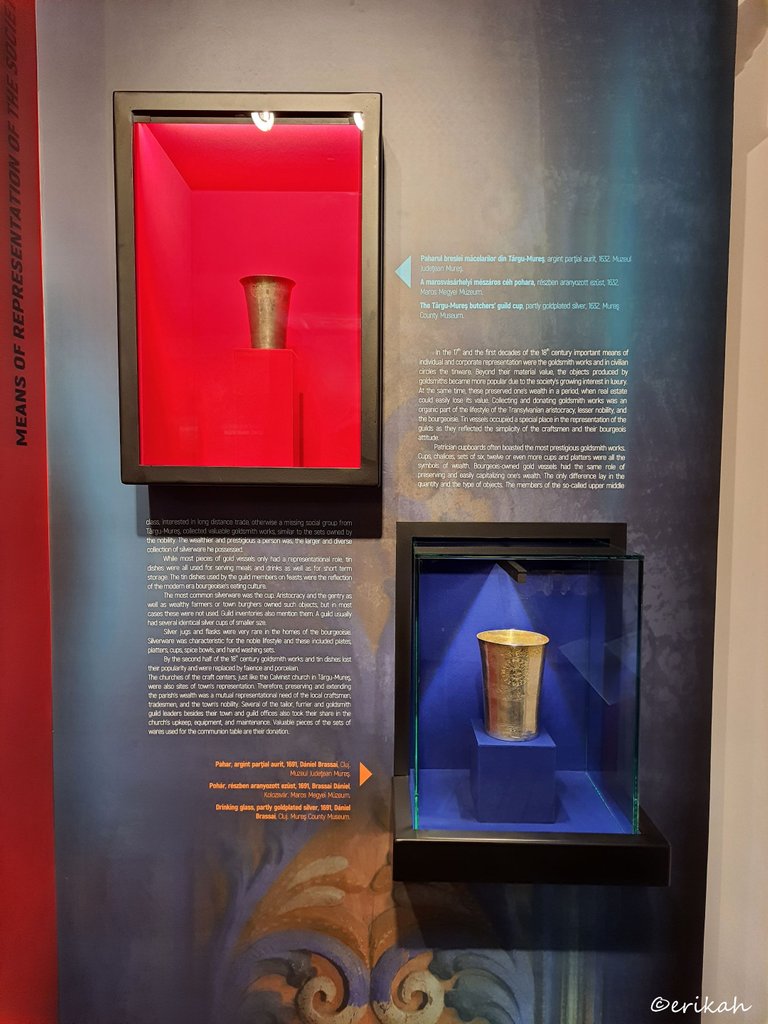
Two impressive cups found during the archaeological excavations, both dating back to the 17th century.
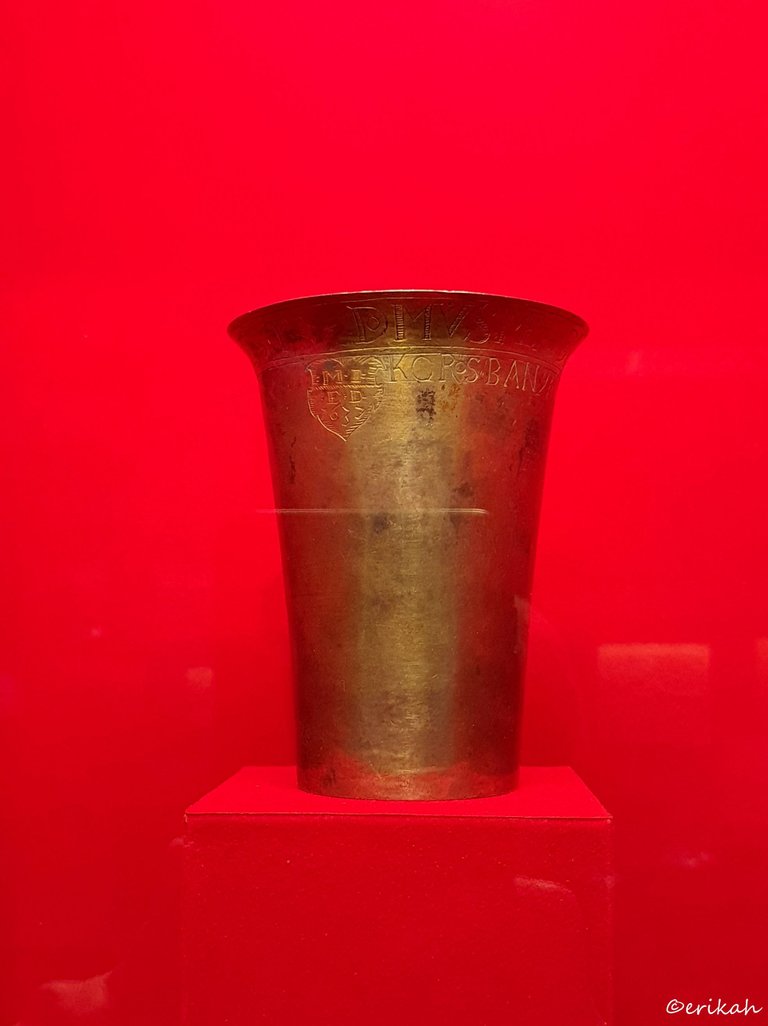
I tried my best to take a decent photo, but it was under glass, so you know. However, I suppose you can see the fine engraving on the cup.
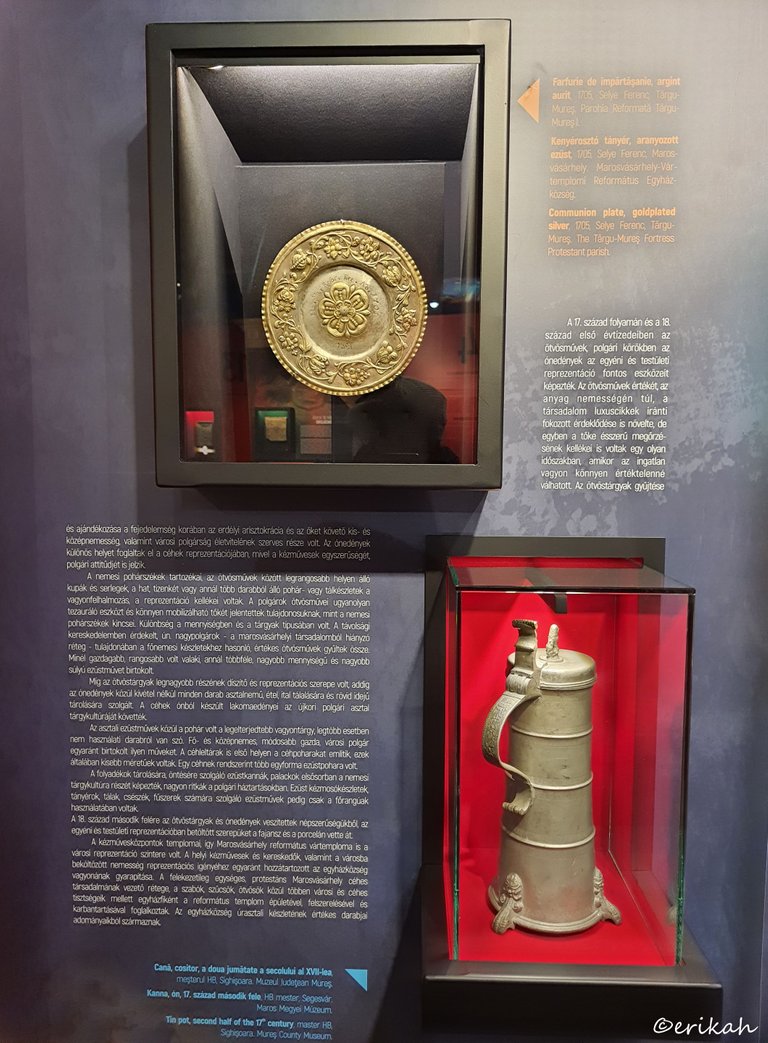
What you see here is a communion plate, goldplated silver, from 1705, from the Protestant parish. The other object is a tin pot, from the second half of the 17th century.
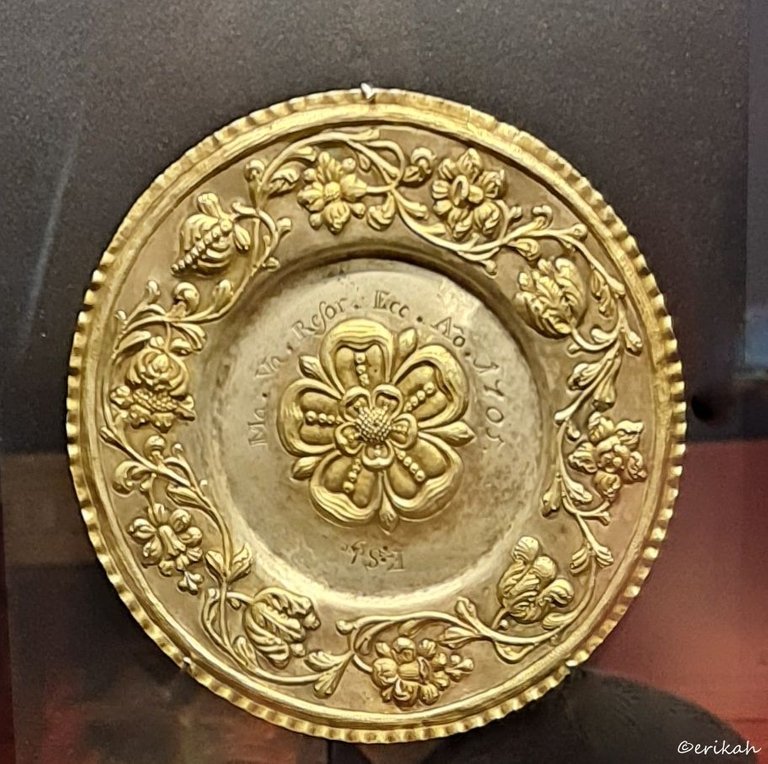

I cropped the image for you to see the details. Just look at how good those craftsmen were back in the 17th century. Those are handmade items.
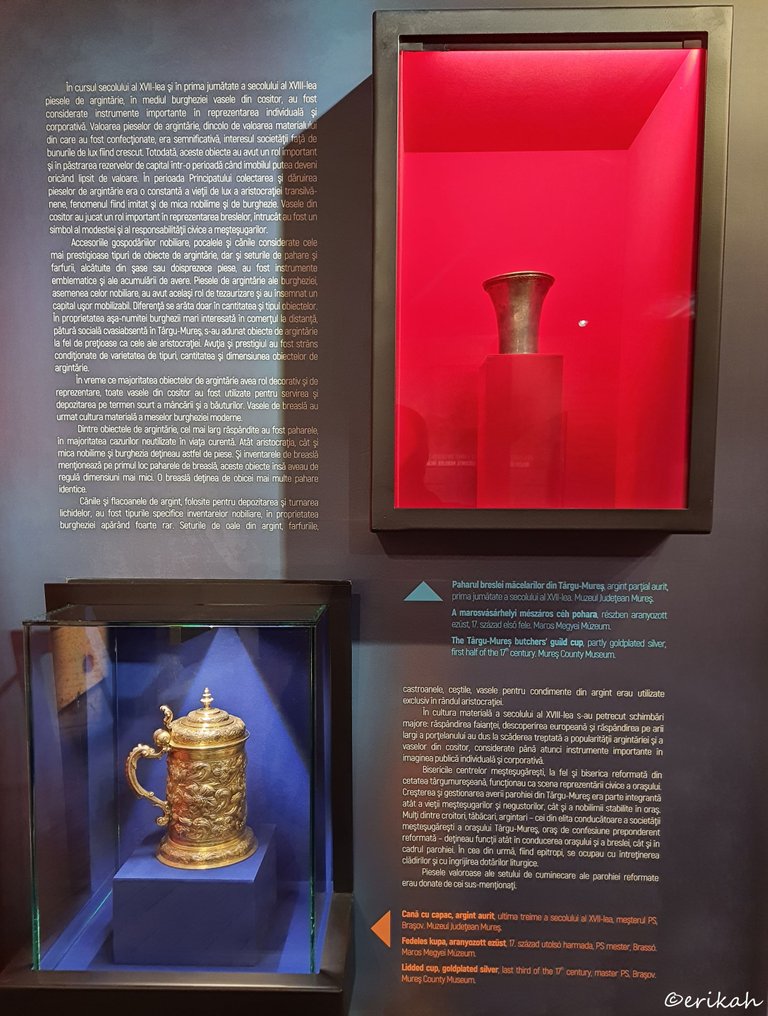
The cup belonged to the butchers' guild of Marosvásárhely, it is partly goldplated silver and was made in the first half of the 17th century. The other item is a lidded cup, goldplated silver, from the last third of the 17t century.
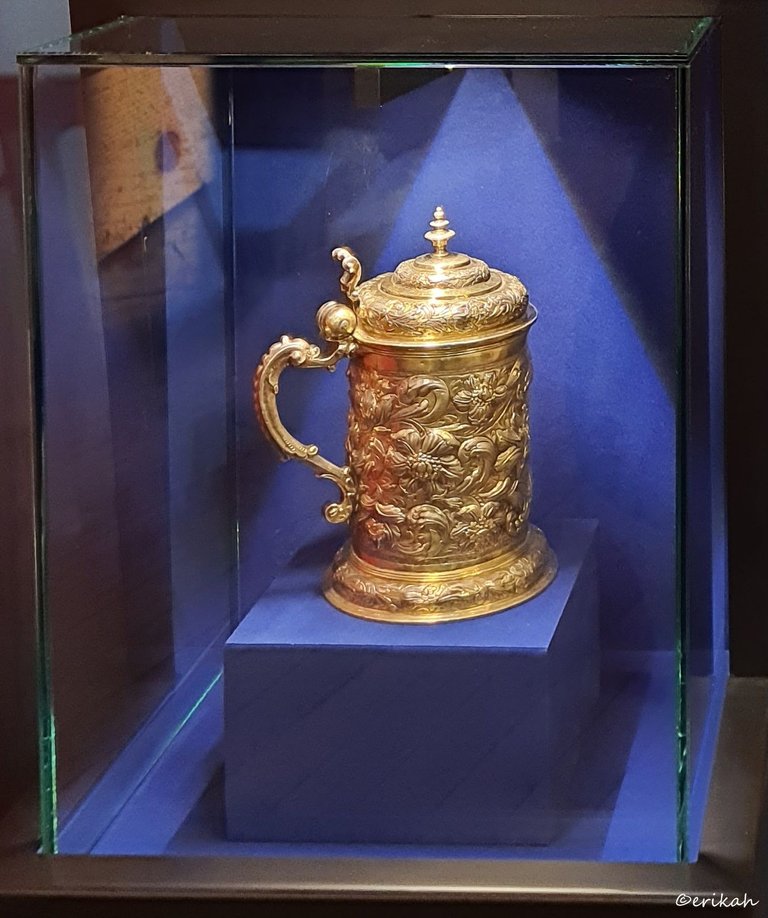
A real beauty.
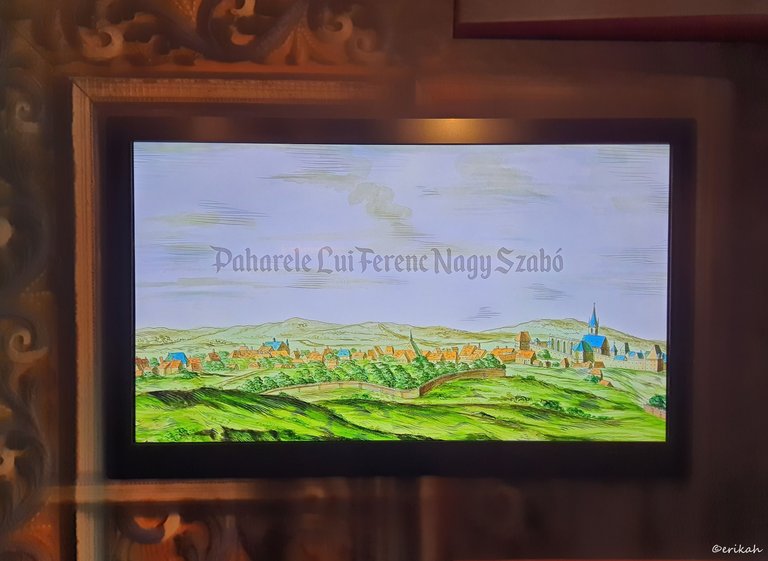
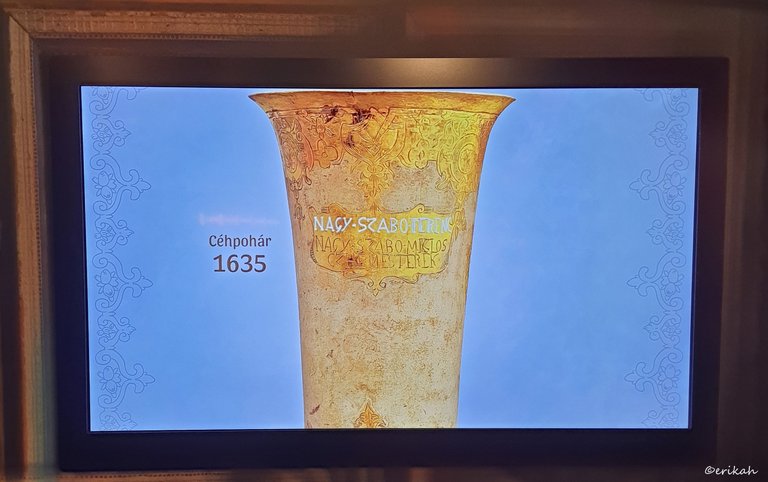
There was a big screen on the wall and a video was playing continuously with the story of this cup, which was impressive.
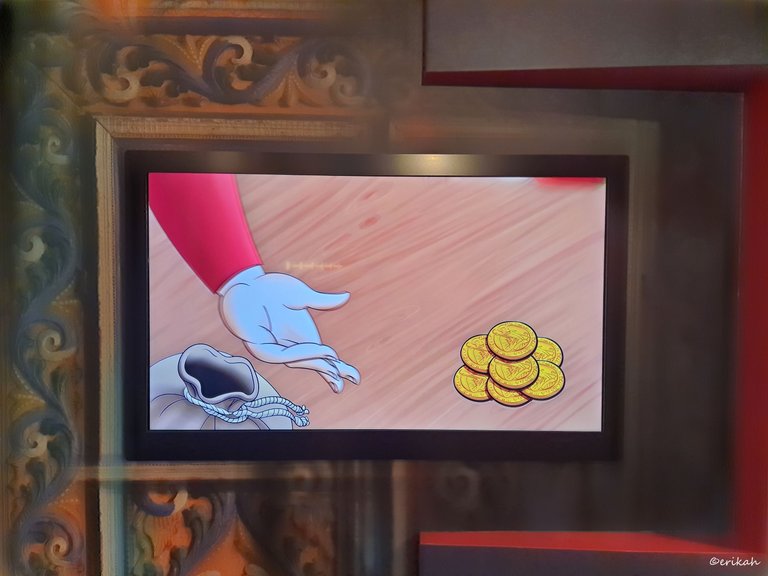
According to the video 4 coins were used to make this cup.
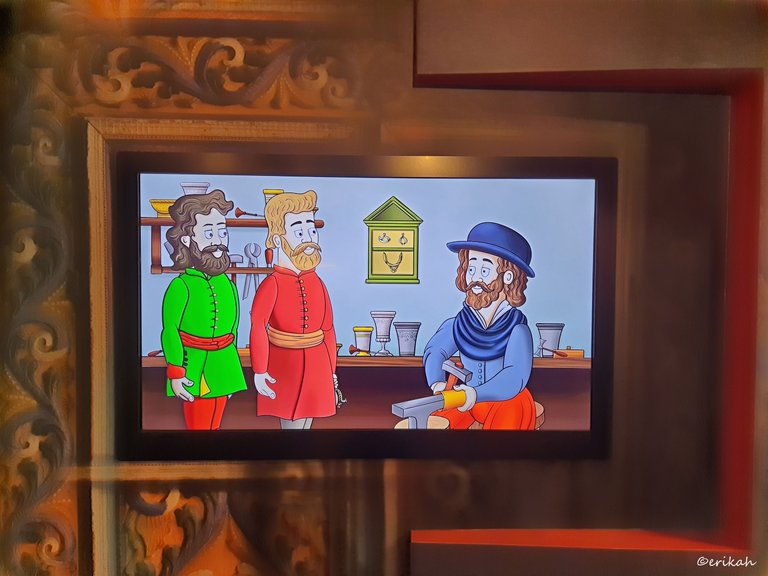
Back in those days coins were made of gold and silver.
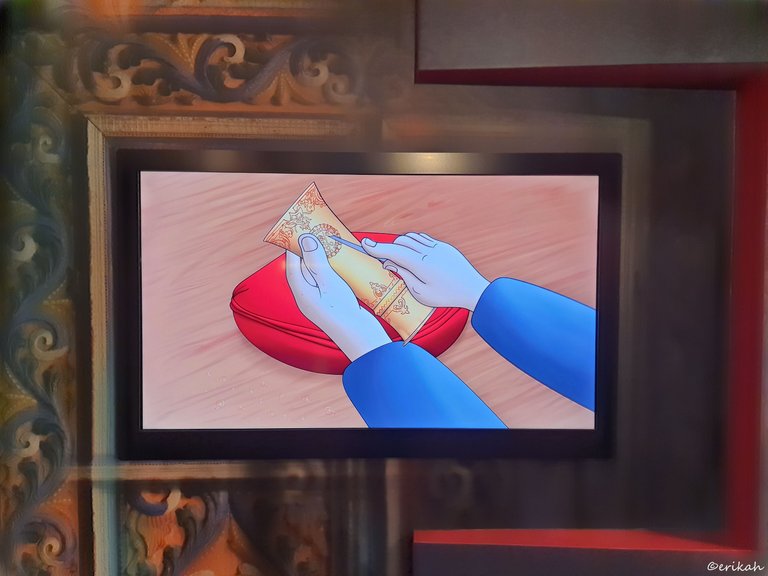
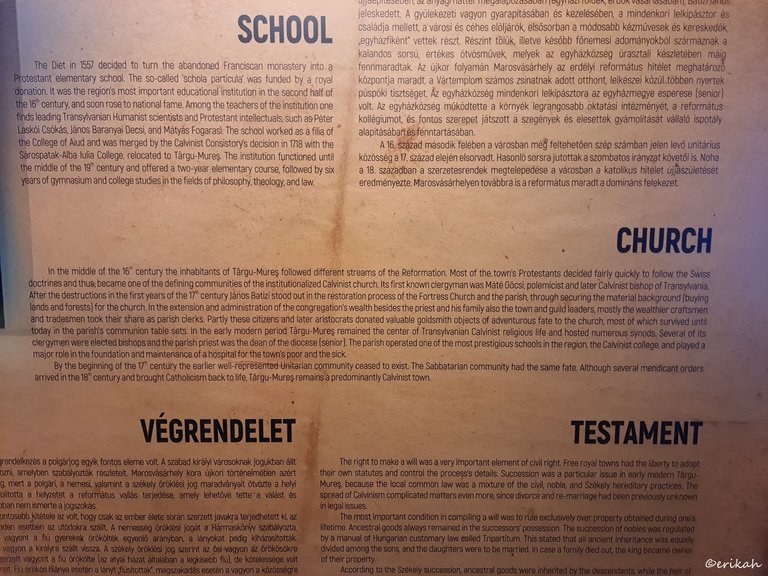
Here you could read about what school and church life was like in those days. Let's not forget that school was available for the upper class, it wasn't mandatory as it is today and only the wealthy and nobles got to send their kids to school. The rest stayed home and helped around the house.
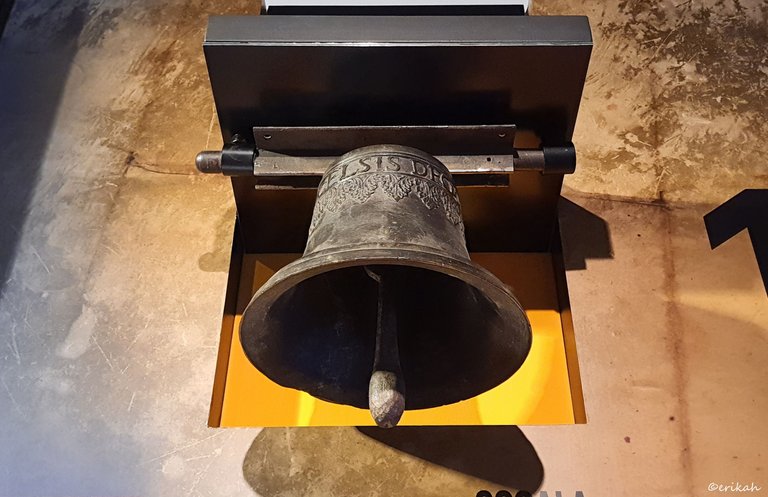
Bells are also testimony of the past. Each city or village had a church and each church had a bell. Each bell is nicely decorated and has the year of making engraved on it. This was a lovely bell.
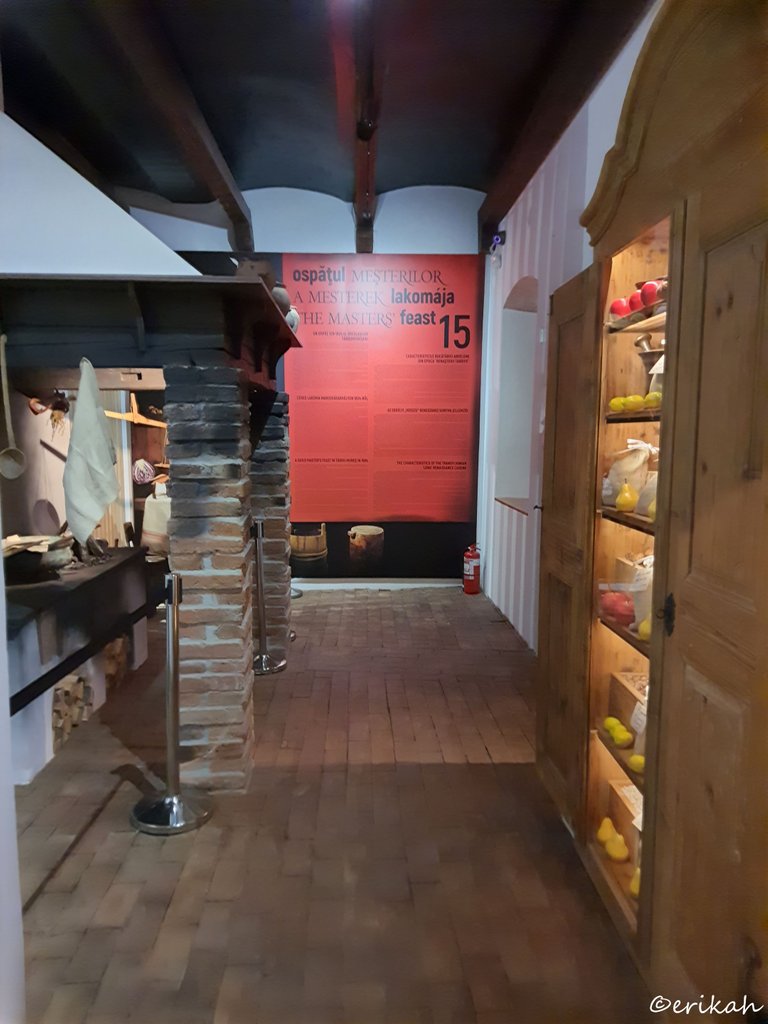
The last part of the exhibition was The Masters' Feast.

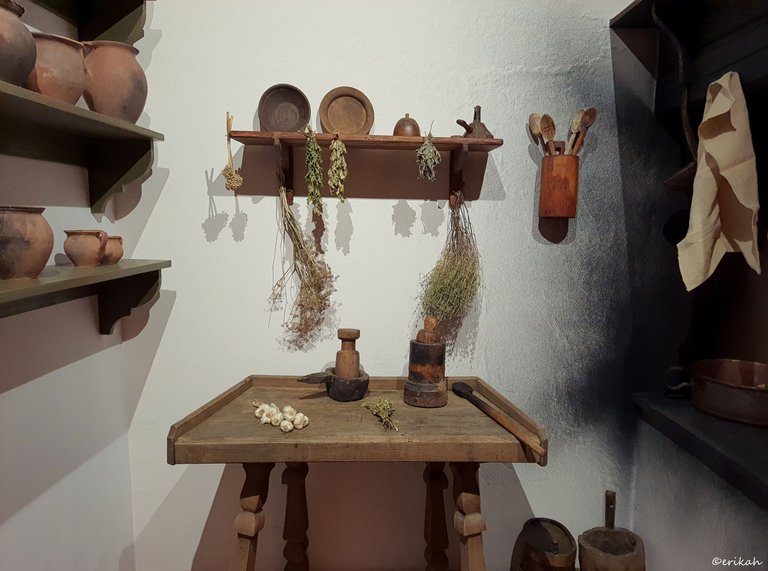
What you see here is most likely what the kitchen looked like back then. Not the ordinary people's kitchen as they did not have one. This must have been of someone who was not exactly poor.
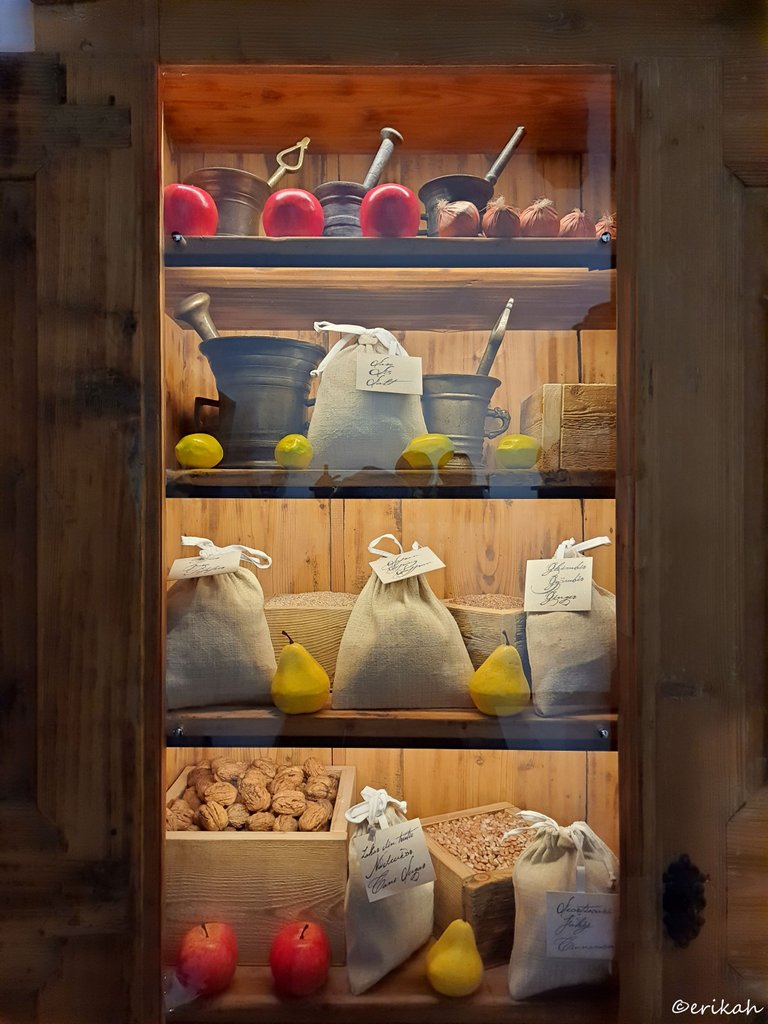
This cupboard was an illustration of the pantry they had. Grain stored in canvas bags, walnuts stored in a wooden crate and so on.

I said this before, whoever designed this exhibition is a master. I loved this cupboard a lot.
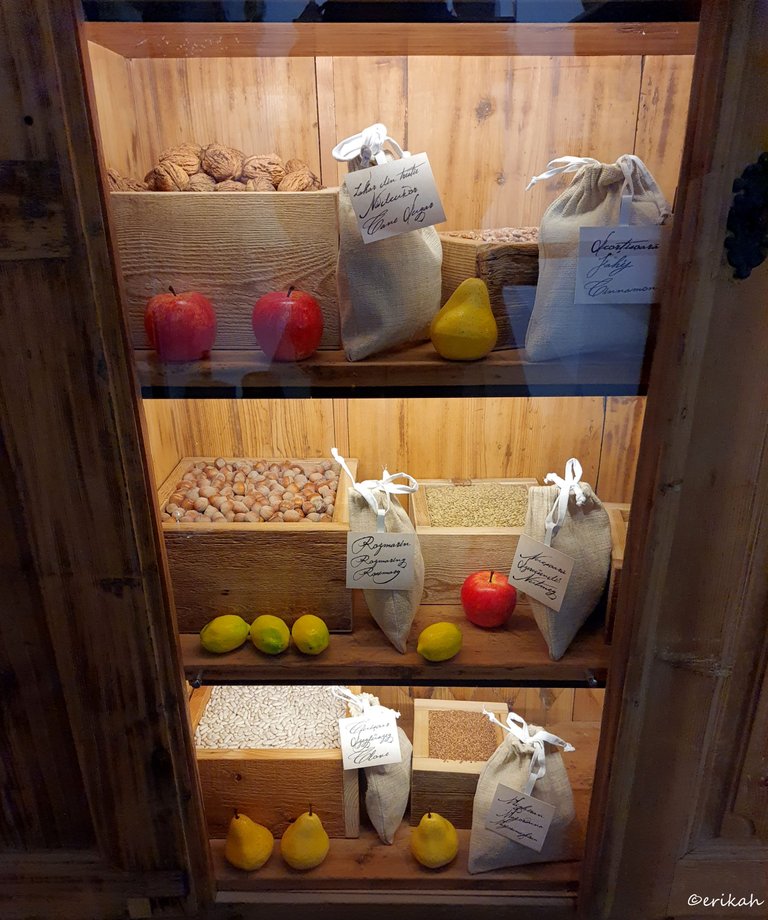
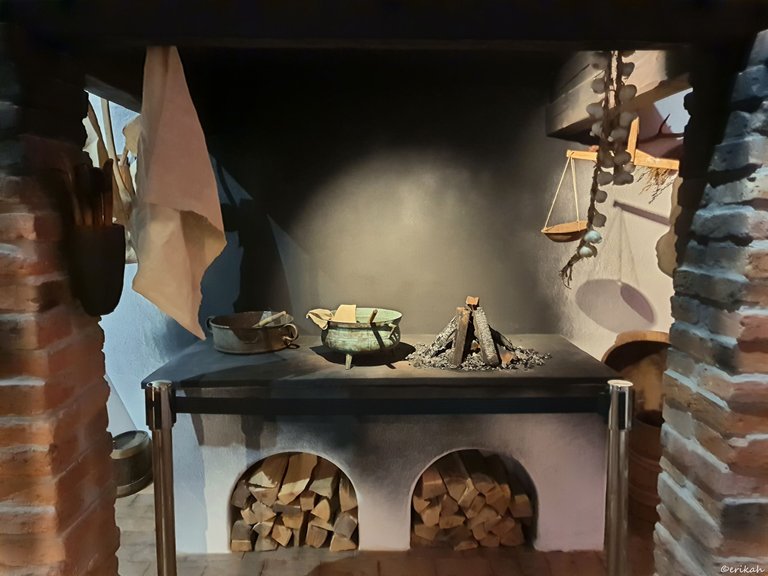
While I was trying to take a photo of tho scene, I smelt burnt wood. Imagine the organizers have thought about the smallest detail, making the visitor feel like really being in that kitchen.
I don't even want to imagine what I was like cooking in those conditions. Obviously you can can get used to it, learn how to cook with wood, but going back now would be difficult.
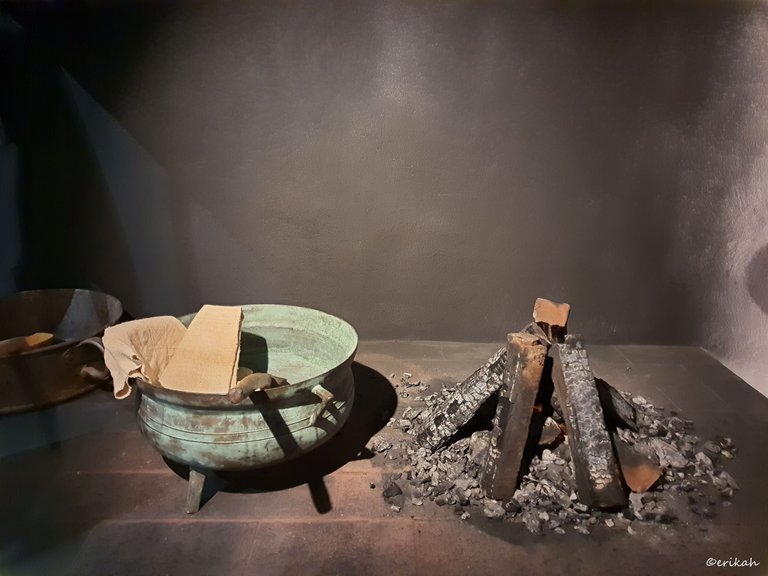
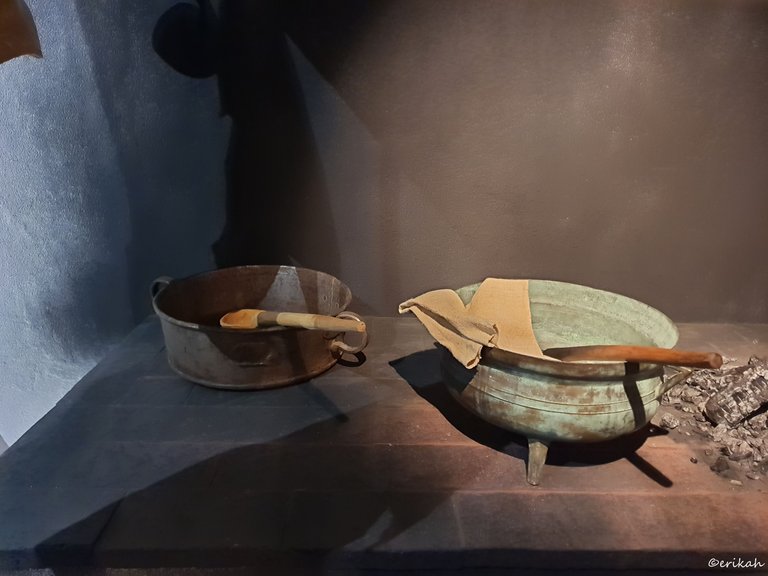
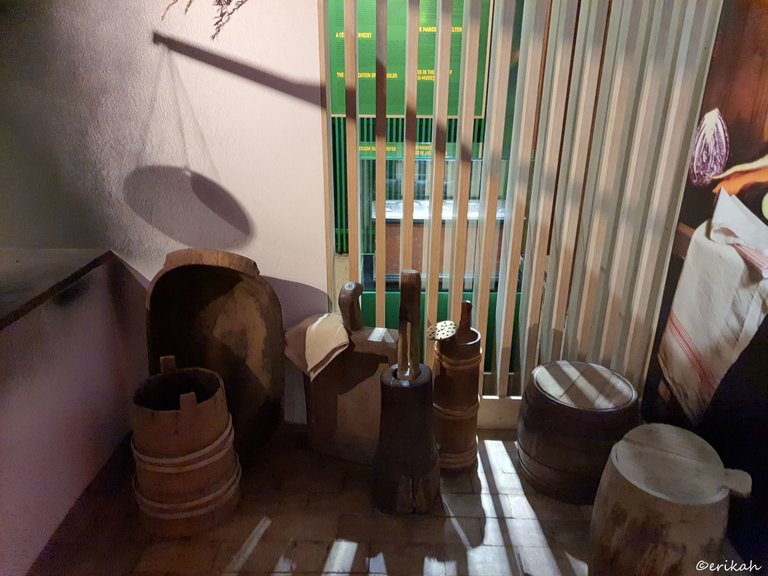
The light was terrible here, but let's see,do you recognize these wooden vessels? Let's start from left to right. There's the one in which they stored the milk. Behind that, leaning against the wall there's the one in which they made bread. In the middle, those narrow, longish ones are for making butter and on the right are the the barrels for wine.

Can you imagine yourself using this scale to bake a cake? I don't want to, rather prefer my digital scale.
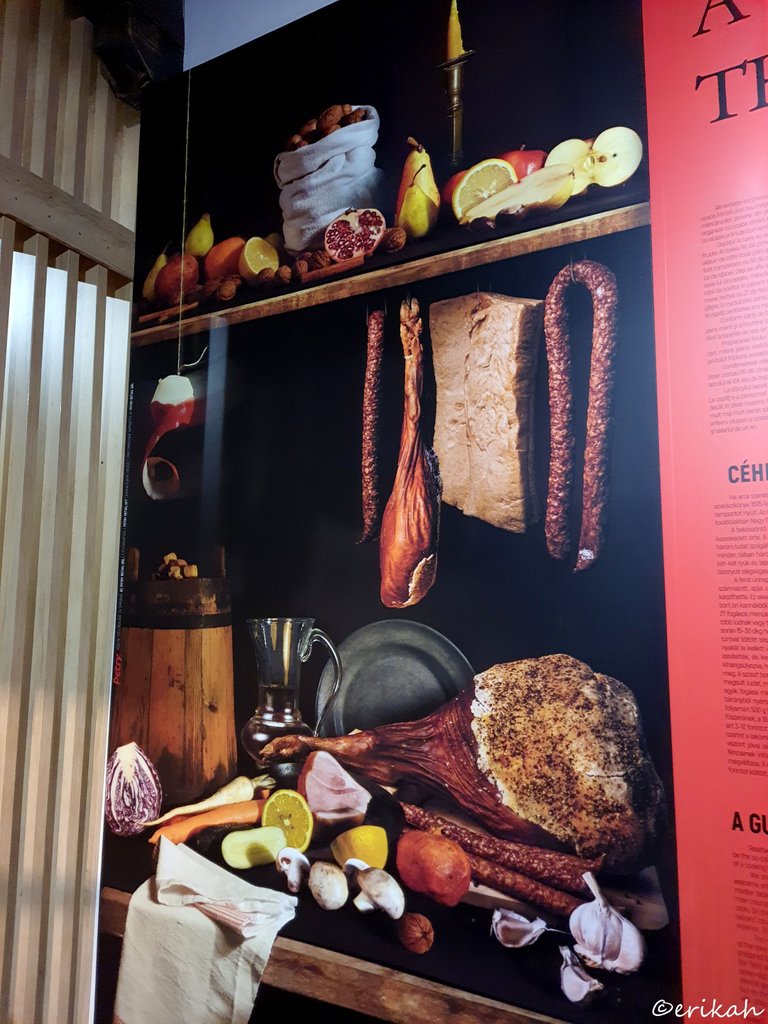
Most likely some pantries looked like this,while others were starving.
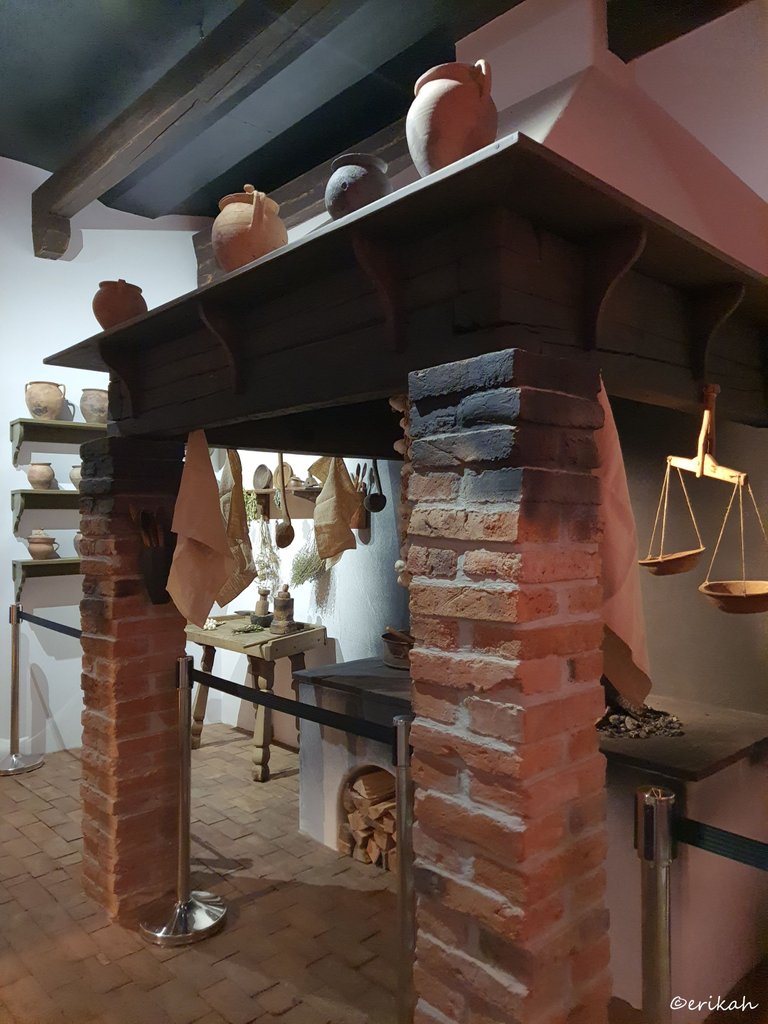

If you're a newbie, you may want to check out these guides:
- Communities Explained - Newbie Guide
- Cross Posting And Reposting Explained, Using PeakD
- Hive Is Not For Me
- How To Pump Your Reputation Fast - Newbie Guide
- Tips And Tricks & Useful Hive Tools For Newbies
- More Useful Tools On Hive - Newbie Guide
- Community List And Why It Is Important To Post In The Right Community
- Witnesses And Proposals Explained - Newbie Guide
- To Stake, Or Not To Stake - Newbie Guide
- Tags And Tagging - Newbie Guide
- Newbie Expectations And Reality

This post has been manually curated by @bhattg from Indiaunited community. Join us on our Discord Server.
Do you know that you can earn a passive income by delegating to @indiaunited. We share more than 100 % of the curation rewards with the delegators in the form of IUC tokens. HP delegators and IUC token holders also get upto 20% additional vote weight.
Here are some handy links for delegations: 100HP, 250HP, 500HP, 1000HP.
100% of the rewards from this comment goes to the curator for their manual curation efforts. Please encourage the curator @bhattg by upvoting this comment and support the community by voting the posts made by @indiaunited.
Thank you.
Oh wow! What an impressive display of how lifestyle was in the 17th century of Transalvania and status symbols.
Indeed it was.
I love to visit exhibitions with historical items. I plan to visit a few museums soon and I aim to see old and even older things like this. You took excellent photos even though it was in glass. Congratulations.
Thank you and enjoy your museum visit.